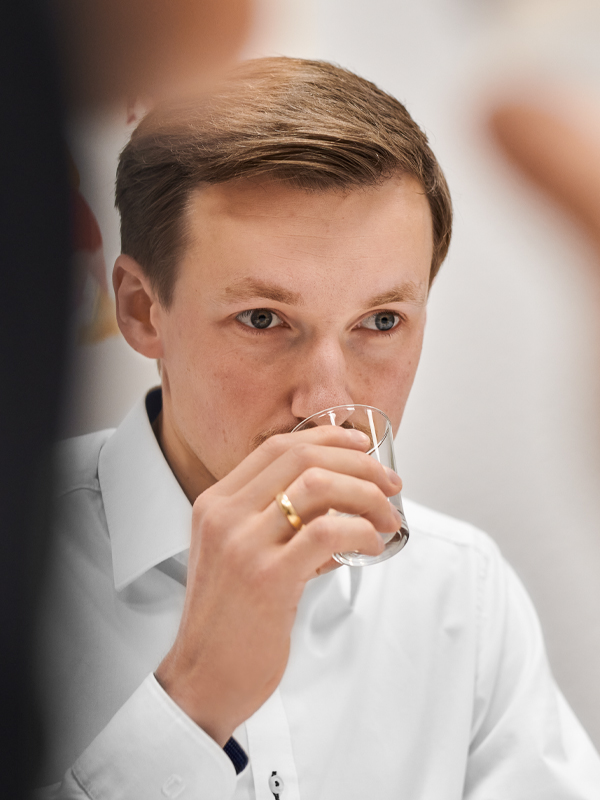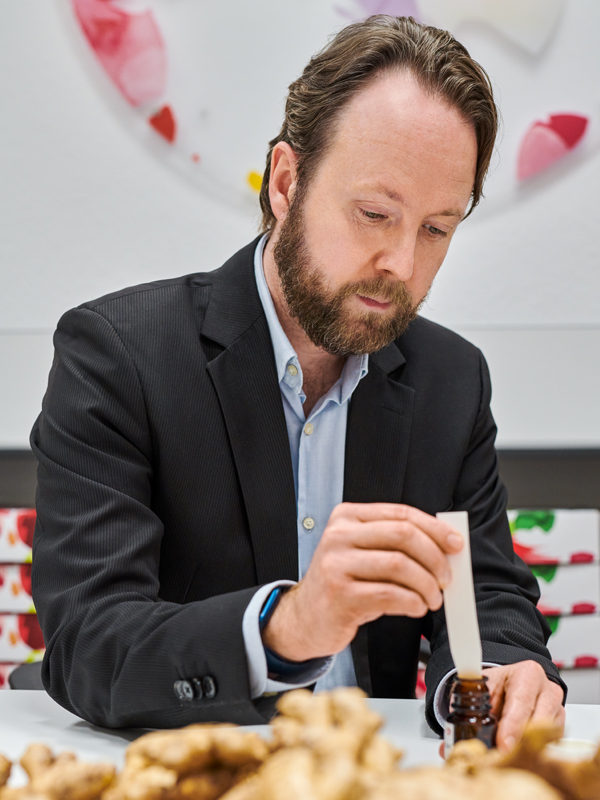The three experts sit down together and jump right into it. They each take a handful of pieces from the huge pile of ginger in the middle of the table and break it, smell it and taste small pieces. To them, every raw material is always exciting – for all senses. Now Maria Reichenbach, Rüdiger Hupe and Benoît Join get talking. Even though they each work in a different department, their work overlaps in many areas – namely research, the evaluation of trends and raw materials.
Ginger is a good example of this. For thousands of years, the aromatic, savory root has been used as a spice and also as a remedy, for example in traditional Chinese medicine or in Medieval Europe. Reichenbach uses the natural properties of ginger in cosmetic applications. The manager of the lab for cell and molecular biology has brought along a couple of creams that contain the spicy substance extracted from ginger. “This spice is generated by the gingerol and shogaol substance classes, which have an anti-aging effect here,” says Reichenbach, handing samples to both of her colleagues. “Both molecule classes demonstrably have an antioxidant effect and trap the free radicals created through external agents, which can damage human cells. Furthermore, they can greatly reduce redness, thus making the cosmetic ingredient a truly multifunctional substance.”



